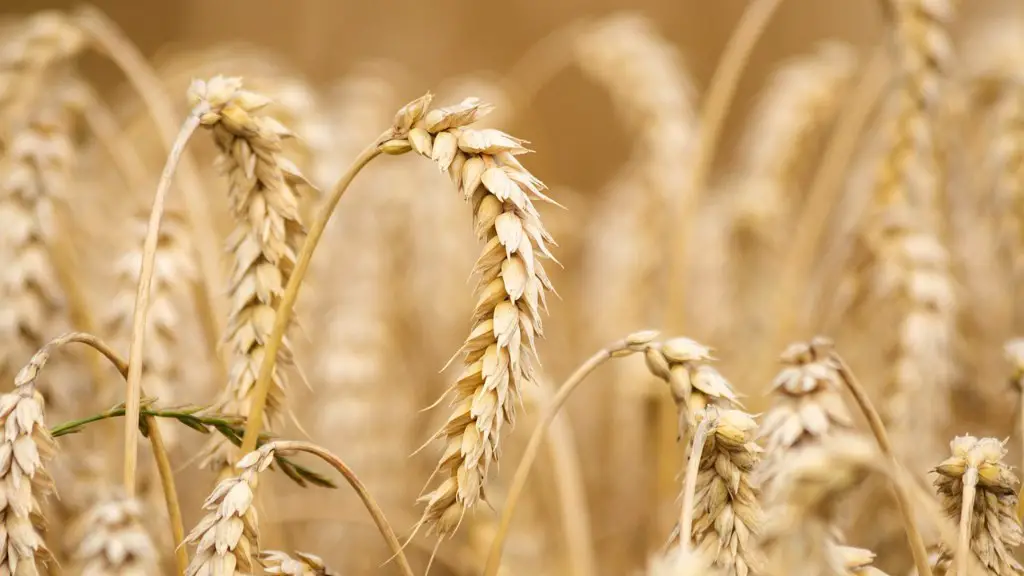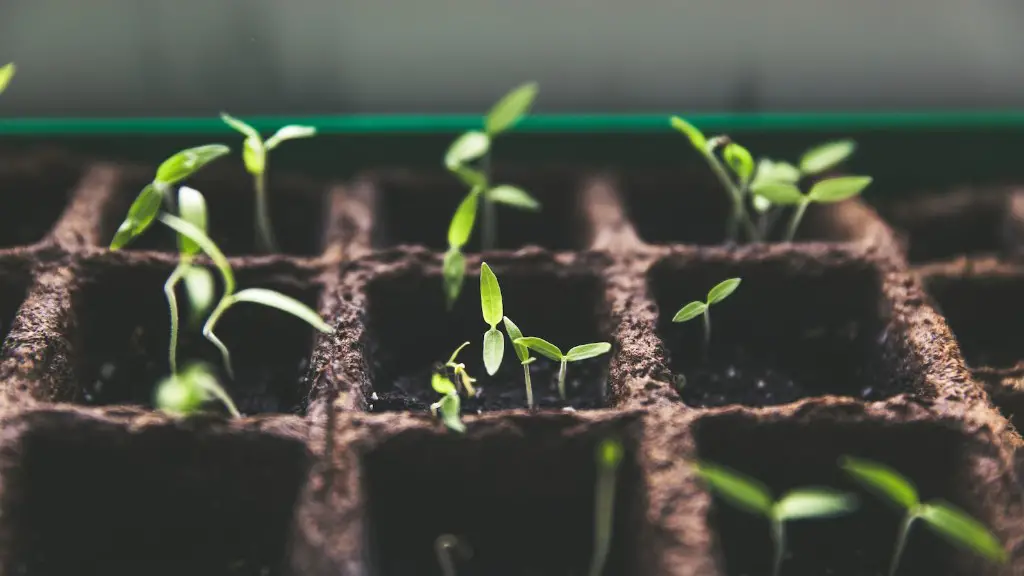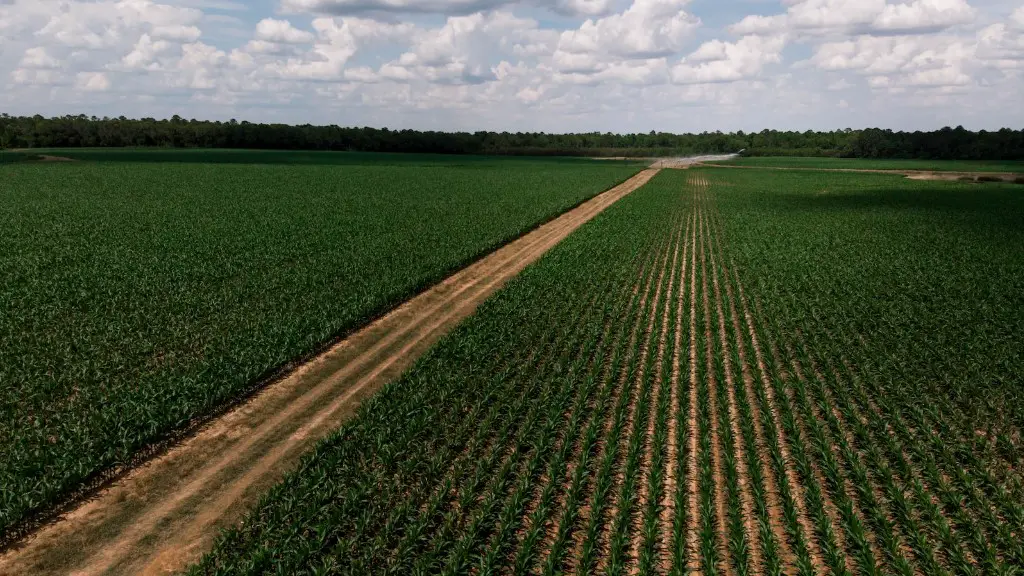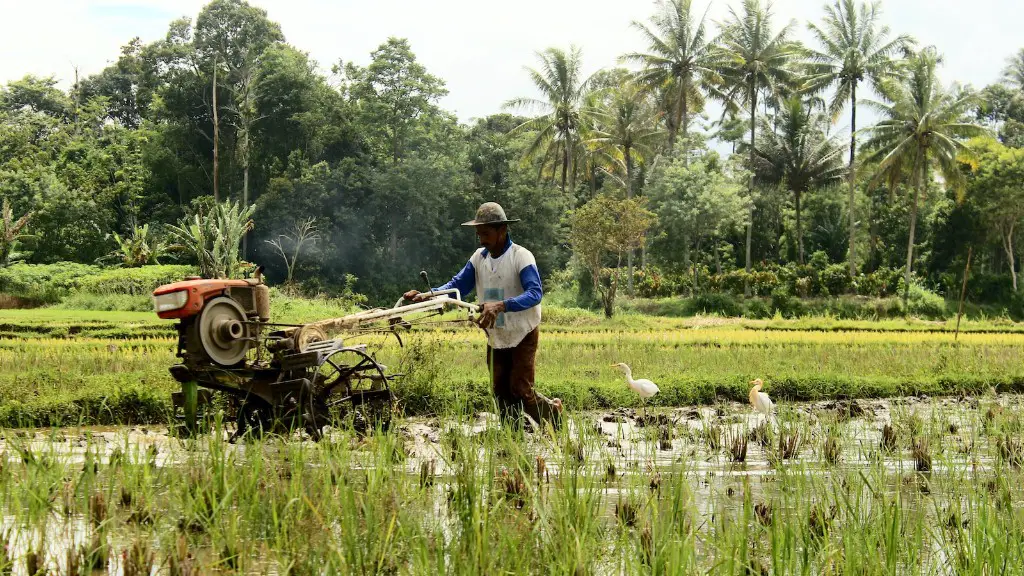The monsoon season represents an integral part of the Indian agricultural system; with its unique properties, it can make or break the harvests of the year. Indian farmers rely heavily on this phenomenon to provide the necessary moisture to sustain their crops throughout the summer months. In this article, we will be looking at how the monsoon influences Indian agriculture.
In India, the monsoon is marked by a change in wind direction, which begins in the south-west and gradually moves northwards. It brings rains to the Indian subcontinent between June and September, meaning it is a crucial part of the summer season for many farmers. The rains provide much-needed moisture for their crops, enabling them to flourish and allowing farmers to gain considerable yields.
The monsoon also provides an abundance of water for irrigation purposes. This lets farmers cultivate fields that are not naturally rich in fertility and helps reduce the effects of drought in regions prone to dryness. This can be a lifesaver for Indian farmers who depend on the monsoons for their livelihood and agricultural success.
In addition to providing various types of precipitation, the monsoon also brings warmth. This is especially helpful for regions that have experienced coldness during spring months, as it can help promote crop growth. However, too much heat or precipitation during the monsoon season can damage the crops in certain regions.
The monsoon season can also be accompanied by high levels of humidity, which can create favorable environments for pests, diseases and parasites. This can be problematic as it has the potential to strip farmers of their crops and lead to reduced harvests. Therefore, it is essential that farmers take measures to monitor and control pests, diseases and parasites during the summer months.
Finally, the monsoon can cause some flash flooding in certain areas. This can lead to localized soil erosion and damage to the crops, reducing yields and leaving farmers with considerably reduced incomes. In addition to this, flooding can also have negative impacts on water quality and agricultural infrastructure, making it difficult for farmers to work.
Impact of Extreme Weather
Extreme weather conditions such as heat waves and heavy rains can have a significant impact on Indian agriculture. These conditions can reduce crop yields, increase the risk of pest and disease outbreaks, and can lead to structural damage to agricultural infrastructure. In the face of these threats, farmers have to be extra vigilant, taking steps to prepare for the worst.
Heat waves can be especially detrimental, as they occur without much warning and can severely dehydrate crops. To prevent this, farmers need to make sure that their crops are well-watered, and that they are using efficient irrigation systems. Additionally, they should be monitoring the temperature of the air and soil to ensure that their crops are not affected by extreme heat.
Heavy rains, conversely, can be equally damaging. While they may provide the moisture that is necessary to sustain the crops, they can also lead to flooding. Floodwater can damage the soil fertility and create changes in the pH levels of the crops, which can further reduce their yields. To prevent this from happening, farmers must have measures in place to reduce the likelihood of flooding and manage it when it does occur.
Another consequence of extreme weather conditions is soil erosion. Erosion can strip away the necessary nutrients from the soil, reducing its fertility and leading to reduced harvests. Farmers have to be proactive when it comes to soil erosion, ensuring that the soil is well covered, and applying strategies such as cover cropping and terracing.
Finally, extreme weather can also lead to a rise in pests and diseases. To protect their crops, farmers should be using good agricultural practices such as proper soil and water management. Additionally, they can use crop rotation to ensure that they are not planting the same crop in the same area every year, as this can increase the risk of an outbreak.
Role of the Government
The government can play an important role in helping farmers prepare for the monsoon season. It can provide resources, training, and support to help farmers become better equipped to deal with the potential threats posed by the monsoons. This can include providing information on best practices for agricultural production and investing in technologies that aid flood management.
The government can also aid agricultural resilience by providing subsidies to farmers. This could take the form of crop insurance programs or other types of financial incentives that protect farmers from natural disasters and other catastrophes. Additionally, they could provide subsidies to help farmers purchase or access better-quality irrigation systems and pest control products.
In addition to this, the government could also implement strategies aimed at reducing greenhouse gas emissions. This could include promoting renewable energy sources such as solar and wind power, as these can help minimize climate change-related risks. Additionally, they could incentivize sustainable agricultural practices, such as the use of compost and cover cropping.
Finally, the government could also aid farmers by introducing regulations that protect their rights. This could include enacting laws that safeguard their access to water, as well as implementing laws that guarantee farmers a fair price for their produce. This could help to secure livelihoods and encourage farmers to continue producing despite the unpredictable nature of the monsoon season.
Measures for Adaptation
In order to be prepared for the monsoon season, farmers must be aware of its effects on the environment and their crops. This can include understanding the potential risks posed by extreme weather conditions, monitoring their fields and applying preventive or protective measures.
To ensure their safety, farmers should take proactive steps to prepare for potential floods and droughts, such as having emergency plans in place and storing drinking water. Additionally, they should regularly monitor the weather and consider using drought- and flood-resistant crops to protect their harvests.
In addition to this, farmers should ensure that they are utilizing the best agricultural practices for their particular region. This could include adopting water-efficient irrigation systems, utilizing compost to improve soil fertility, and rotating crops to prevent pest and disease outbreaks.
Another important measure for adaptation is for farmers to collaborate with the government and local organizations. This could involve working together to create early warning systems for extreme weather, raising awareness about climate change, and ensuring that farmers are equipped with the necessary knowledge and resources to prepare for the monsoon season.
Finally, it is important that farmers look towards the future and plan ahead. This could involve introducing more sustainable agricultural practices and investing in technologies that can aid in the production of crops during the summer months. Preparing for the monsoon season can be a challenging task, but it is necessary for the preservation of harvests and long-term agricultural success.
Impact of Climate Change
The monsoon season is an important factor in India’s agricultural system, but its effects are being impacted by climate change. Rising global temperatures can lead to more severe weather conditions, such as heat waves and heavy rains, which can limit crop yields and cause damage to agricultural infrastructure.
In addition to this, climate change can also affect the timing and intensity of the monsoon season. As the temperature rises, the monsoon’s arrival can become less reliable and bring more extreme conditions. This can be problematic for farmers, as having a drought or excessive rains can severely damage their yields.
Furthermore, climate change can cause more extreme weather patterns, such as flash floods. These can lead to soil erosion and damage to crops, leaving farmers with reduced yields and incomes. It is therefore essential that farmers have measures in place to protect their harvests and become better equipped to deal with the unpredictable nature of the monsoon season.
Climate change has the potential to significantly disrupt India’s agricultural system and its economy. To protect the livelihoods of farmers, it is essential that the government takes decisive action and invests in strategies that help farmers adapt to the changing weather conditions. This should include providing resources, training, and support, as well as investing in technologies that aid flood management.
In conclusion, the monsoon season is an integral part of the Indian agricultural system. It provides much-needed moisture to sustain crops and provides an abundance of water for irrigation. However, it is also accompanied by risks such as pests and diseases, extreme weather patterns, and flash floods. In order for Indian farmers to succeed in the face of these challenges, it is essential that they understand the effects of the monsoon season and the measures they can take to prepare for it.





